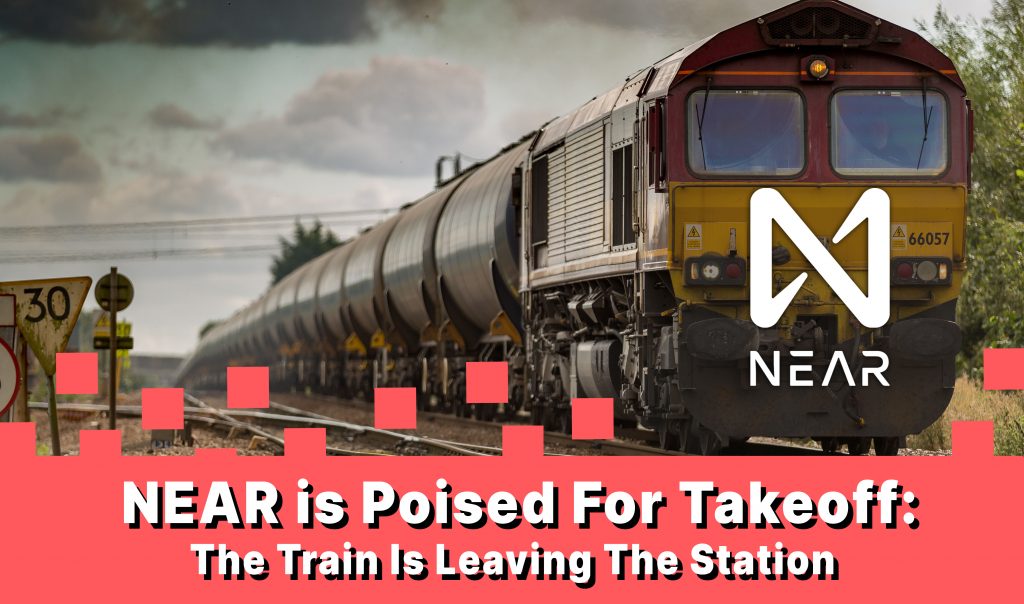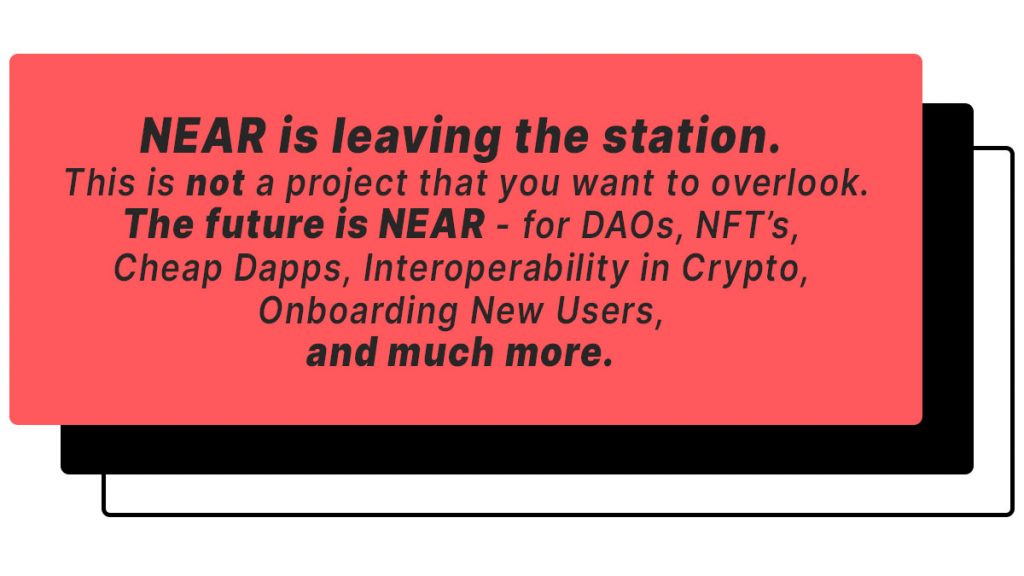NEAR is Poised For Takeoff: The Train Is Leaving The Station


About eight months ago, NEAR Protocol launched its mainnet to a small community of token holders, and a number of reputable VCs — a16z, Pantera, Electric Capital, Dragonfly Capital, Coinbase Ventures. Since then it has largely flown under the radar for most of crypto in spite of exceptional fundamentals and a strong focus on user-experience.
A New Phase For NEAR Has Arrived:
With the launch of the Rainbow Bridge, Open Market Protocol Flux and Pulse, Decentralized exchange Ref.Finance, as well as the upcoming launch of the NEAR EVM and Mintbase on NEAR, NEAR is entering a new phase. Now before you make an instant comparison to another L1 and everything that L1 has going for it, consider the following characteristics that NEAR is positioned to dominate within crypto:
Scalability
NEAR is going to be able to scalably handle Ethereum and NEAR applications at affordable rates and with quick transaction speeds with streamlined storage and predictable fees. Once the EVM is launched, NEAR becomes a proper ‘World of dApps Protocol’ that will not only handle congested DeFi dApps on ETH, but also future Open Web solutions relating to Gaming, NFTs, Social Tokens, and the next wave of decentralized finance.
The Multi-chain Interoperability of the Future
The Rainbow Bridge was the first product that utilizes Rainbow Protocol. Rainbow Protocol provides 80% of the needed infrastructure for replicating the rainbow bridge with other L1 Chains, such as Cosmos and Polkadot. This means, effectively, that NEAR is actually building fully permissionless and decentralized bridges to a network of other protocols. In the game of castles, that means that while other L1s might have bridges to 1 or 2 other protocols (and bridges that are not permissionless or decentralized at that), NEAR will be the hub for interoperability.
Balaji recently explained why this matters on the Tim Ferris Podcast:
“Derivatives might go to a chain that specializes in that. NFTs might go to a chain that specializes in that. Interchain operability will be a big thing. Where assets can be indexed and referenced, even if they are remote – to a particular chain. Bitcoin had no knowledge of other chains. And nowadays chains do have knowledge of other chains.“
With the blossoming Sputnik DAO infrastructure on NEAR, NEAR’s focus on interoperability is extremely encouraging for streamlining the next generation of on-chain, community governed organizations that can call contracts and move assets between a universe of chains.
Remember everything about how community and DAOs are the future of crypto? Well NEAR is building a world of dApps that will be the hub of a universe of chains. It’s happening on NEAR – Yes both, the World of dApps and the Universe of Chains.
User Experience and the NEAR Account Model
Jumping off from these two points above, we can add the final knock-out punch with the NEAR account model. SO many projects in crypto today are entirely inaccessible for most non-crypto people. There are too many new processes, transfers, and addresses that have to be made, a process that is messy and not user-friendly. NEAR is built from the ground up to fix that problem. That is what the NEAR Account model does so well that other projects either have to try to build into their protocol at a later point, or simply ignore it altogether and limit their scope to crypto-natives. NEAR will scale to entirely new users – the next generation of gamers, existing Fintech, artists, creators, you name it.
NEAR is Future Proof:
Why does being future proof matter? Because the tempo of innovation into the future is increasing extremely quickly. Existing projects today should enjoy the moment, but anyone interested in the future of the space needs to be asking themselves about the future in an honest manner.
How will interoperability across chains roll out in the coming years? Will that be decentralized and permissionless? Will it have to be?
How will crypto appeal to the masses or those looking for alternatives to the existing system? Is friendly UX and easy onboarding a means of accelerating that process?
What type of governance structure will not only be streamlined on a single Layer 1, but also across Layer 1s? How does community-based governance play out in the coming years, with existing infrastructure and silos?





